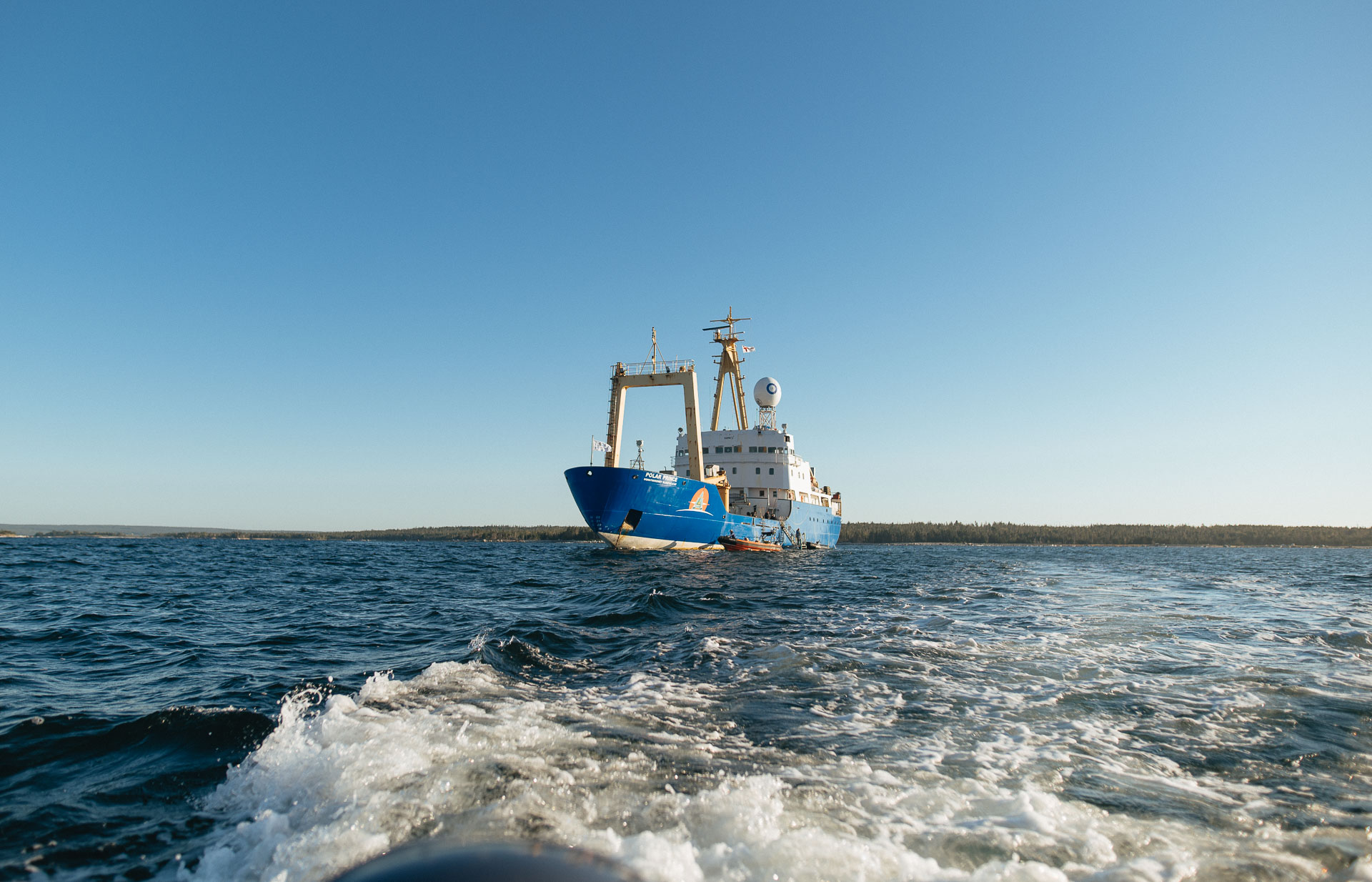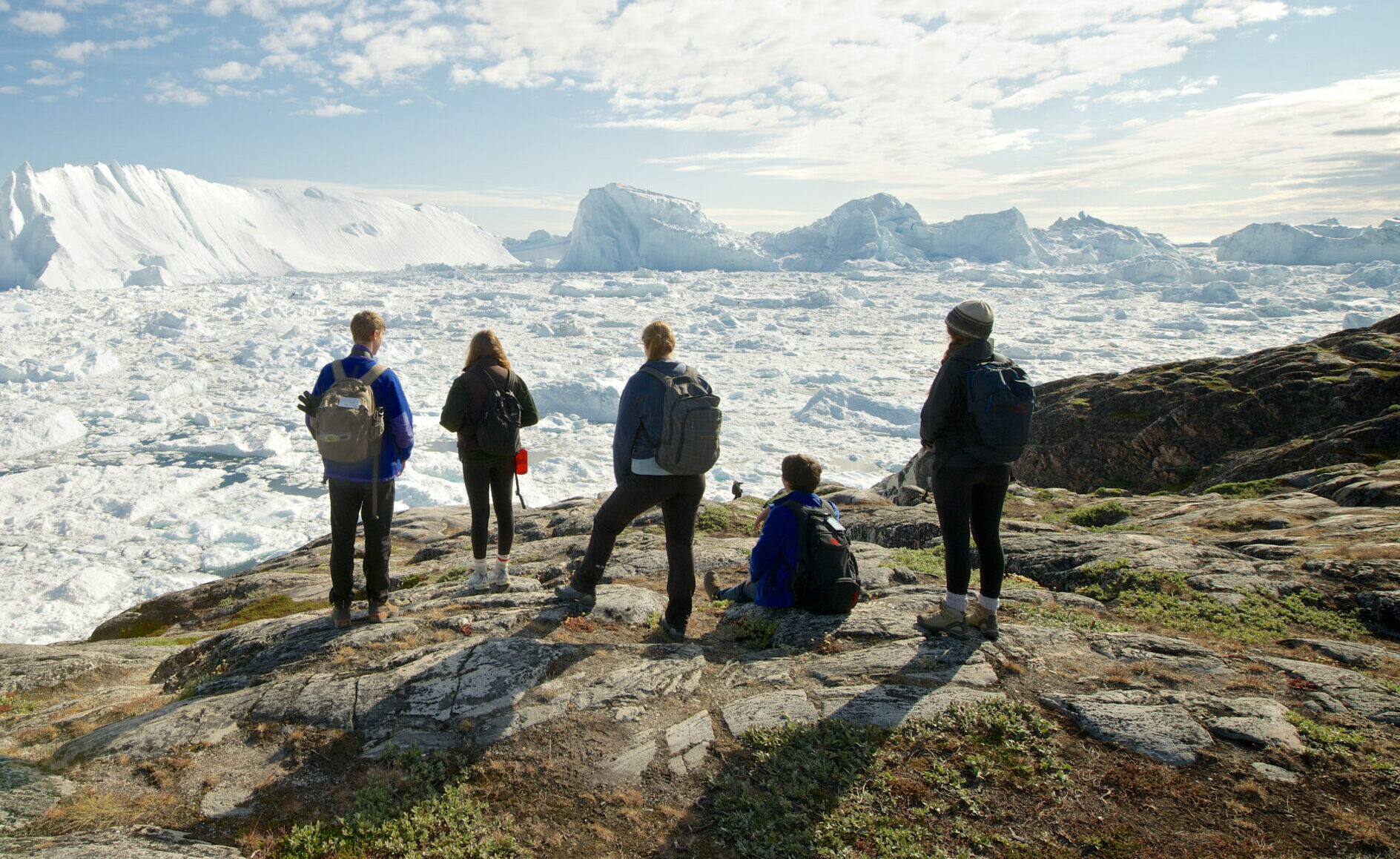Cape Breton and Sable Island NPR Expedition: Days 7-9
The second half of our expedition kicks off in Louisbourg! After a quick zodiac to shore we made our way to the living history museum that is the Fortress of Louisbourg. Everyone here was dressed in full 1700s character which made for an incredibly immersive experience. If the costumes didn’t convince you, the cannon firing certainly did. We learned all about the history of the museum, from its original French ownership, to being twice captured by the British, to the fact that its construction was never actually finished. A Parks Canada employee gave us a tour of the grounds, and pointed out the swooping cliff swallows and barn swallows that call the fortress home. We then got to hear two presentations, one on the archaeology of the area, and another from a Mi’kmaq representative, who spoke about how the Mi’kmaw history was woven into the fortress, and how the museum can incorporate this history throughout their experience. In the afternoon we broke off into different groups. Some of us joined Peter on an archaeological ruins walk, others joined Sue and Clayton, a Parks Canada Ecologist, for some bird watching and classification. They travelled to a peat bog and used the appearance, sounds, and environment of different birds to help identify over 10 different species. A final group went down to the intertidal zone with Katriina to see what species they could identify along the shores. After another full and educational day, we once again boarded the Polar Prince, and made our way to the gem of the expedition, Sable Island.

The next morning as we awoke the Polar Prince was just pulling up alongside Sable Island. The rain was pouring down but that didn’t stop us from venturing over to the sandy shores. As our zodiacs landed we were greeted not only by the Parks Canada team but about 40 grey seals as well. We hiked through the downpour towards East Light, a non-functional but still standing lighthouse. Here we got to see the ruins of an old outpost that was home to the family that ran the original lighthouse. The sand dunes here shift constantly which means that they are often uncovering and burying artifacts from the past. You never really know what you’ll find on Sable Island. By the way, did we mention it was pouring rain? Anyways, after we explored East Light we broke off into three groups. The first of which went digging for water, just like some of the horses here do to source fresh water. We managed to find some, and did an activity to see how deep we had to dig to find the water, and then tested it to see its salinity on different parts of the island. We learned that the island has a “dome” of freshwater that sits under the sand, so the closer to the ocean we were, the saltier the water was!
The next group went on a walk to spot some of the wild horses that call this island home. Apparently there are over 500 wild horses on Sable Island, and they’re now considered their own distinctive breed of horse. We also learned that they are smaller than the average horse, and have a shorter life expectancy. The third group went for a hike to see if they could uncover some of the artifacts buried by the shifting sands. They managed to find an old bathtub from an outpost, along with some horse bones, and some unique mushrooms growing on a stud pile – a fragrant display of territory marking.
“We couldn’t go swimming, but we had the ocean in our boots so that was cool.”
– Kels Smith, youth participant
After a bite to eat and an opportunity to dry off, the rain had subsided. We decided to gear back up, and explore a bit more of Sable Island. We hiked up Bald Dune, the largest dune on the island, and were rewarded with a fantastic view of both sides of Sable Island. George played a moving song about the diminishing glacier in Illulisat, Greenland. It seemed rather fitting as the dune we were currently sitting on was also moving. With the wild horses and waves crashing in the background it made for a truly magical experience. We all took a minute to breathe in the scene and appreciate where we are, Grounded.

We broke off into groups again, taking on various activities. Some of us went back to see the horses up close. We were pleasantly surprised with how unphased by our presence they were. We even got to see a foal with her mother. The second group hiked to a pond surrounded by blue flag irises and marsh lilies to do some water sampling. They may even be the first group to run eDNA tests on that particular pond. The group tried to catch some minnows in a trap, but all they caught were leeches. The third group went with George for a songwriting session. Mathieu played a song for us, and Jody gave a performance in Inuktitut – again marking another possible first for Sable Island.

That evening after dinner we all reflected on the day’s events and remarked how special it was that we were able to experience Sable Island. We can’t wait for another day of adventure and learning here tomorrow!
The next morning we woke up excited for another amazing day on Sable Island. We geared up and took a short zodiac through the thick fog to the shore where we then decided to divide and conquer, splitting up into two groups. The first group headed out to West Light. Here we met the research group studying fog as part of the FATIMA project. We helped them send up a weather balloon to gather information on the altitude, temperature, pressure, and humidity to determine where the fog starts and ends. After that we hiked over to a nearby pond where this time our minnow traps were more successful. We managed to catch ninespine stickleback and mummichog. After some more eDNA testing we got to see a bit of horse-drama when some stallions started clashing and kicking.
“My favourirte part was watching the horses run and I think they were fighting over a female too, the male horses…. It was so amazing, I was in the moment knowing that I won’t likely get to see Sable Island wild horses again.”
– Jody Tulurialik, youth participant
After lunch we switched groups so that everyone could be involved in the day’s activities. This meant we were off to do a survey of the tern colony that lives around the Main Station. In an attempt to determine the boundaries of the colony we slowly walked in a big line looking for nests to mark the edge. The nests are fairly flat and typically have one or two brown speckled eggs, hard to spot among the plants! We had to be extra careful not to step on any of the chicks that like to hide because they can’t fly yet. They were so cute and fluffy! The parents didn’t really appreciate us as guests and continually squawked, dive-bombed, and pooped on us with surprising accuracy. Not to worry though, we had some protective equipment on – helmets with flags attached to keep the terns away from our heads, and garbage bags to keep the poop off!

After another action packed day on Sable Island we returned to the Polar Prince for dinner, pulled anchor, and set sail to our next destination, the 1000 Wild Islands.
Check out our most recent highlight video to get a recap of what we’ve been up to, and check out our expedition page to follow along with the rest of the journey!





